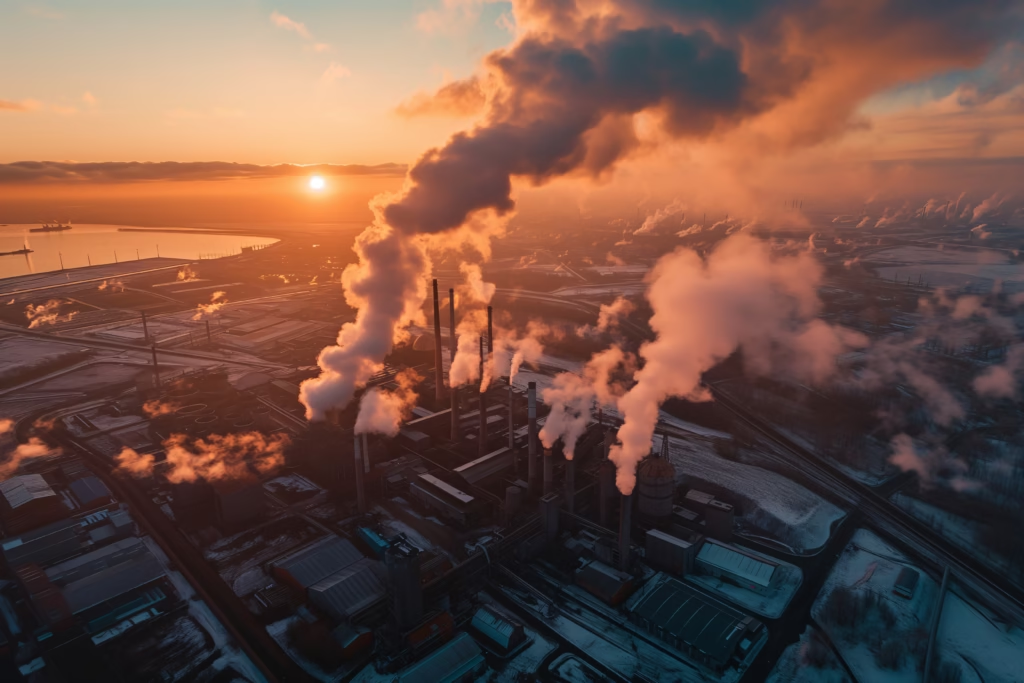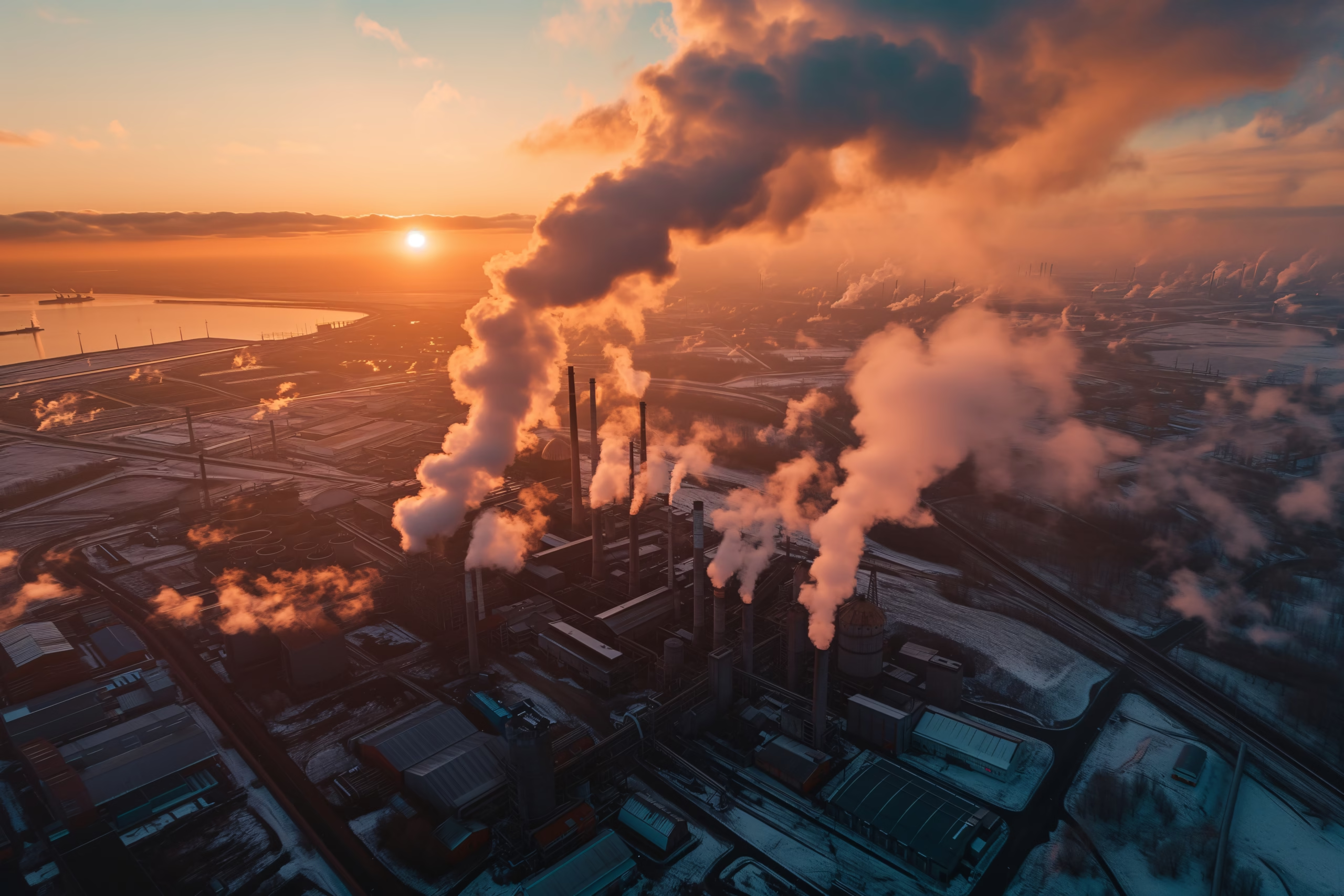Climate change is one of the most pressing challenges of our time. It refers to the long-term alteration of temperature and typical weather patterns in a place. Human activities over the last century boosted greenhouse gases in the atmosphere. This has led to rising global temperatures, extreme weather events, and rising sea levels. The effects are widespread, impacting ecosystems, economies, and human health. Addressing climate change is now urgent, and we need all available solutions to mitigate its effects.
What is Carbon Capture Technology?
Carbon capture tech captures CO2 to avoid air release. This captured CO2 can then be stored underground or used for other purposes. Carbon capture plays a crucial role in reducing the amount of CO2 in the atmosphere, making it a powerful tool in combating climate change. It can help industries, especially those that are hard to decarbonize, continue operating while reducing their carbon footprint.
The Science Behind Carbon Capture: How It Works to Fight Climate Change
The science behind carbon capture is simple yet powerful. Carbon capture systems divide into three main stages: capture, transportation, and storage. The first step involves capturing CO2 directly from emission sources, such as power plants or factories. Then, compress and transport the captured CO2 via pipelines to suitable storage sites, usually deep underground in rock formations. Researchers have found that these sites securely hold CO2 for long periods, preventing it from entering the atmosphere. Through this process, carbon capture significantly reduces the carbon emissions that contribute to climate change process.
Why Climate Change Needs Carbon Capture Solutions Now More Than Ever
As the world continues to experience the impacts of climate change, immediate solutions are necessary. Carbon capture is one of the few technologies that can significantly reduce atmospheric CO2 levels in the short to medium term. While renewable energy sources like wind and solar are critical, they alone cannot address the vast amount of CO2 already in the atmosphere. Carbon capture offers a complementary solution, helping to bridge the gap while we transition to a low-carbon future. Without it, achieving global climate goals becomes increasingly difficult.
Types of Carbon Capture Technologies
There are several types of carbon capture technologies, each with its own advantages and applications:

- Post-combustion capture: This method captures CO2 from exhaust gases after burning fossil fuels. It’s useful for retrofitting existing power plants.
- Pre-combustion capture: Integrated gasification combined cycle (IGCC) plants often capture CO2 before burning fuel.
- Oxy-fuel combustion: Fossil fuels burn in pure oxygen instead of air in this process, producing a more concentrated CO2 stream for capture.
- Direct air capture (DAC): This innovative technology captures CO2 directly from the air. Though still in its early stages, DAC has the potential to remove large amounts of CO2 from the atmosphere.
Each method has its own effectiveness and suitability depending on the application, but together, they form a comprehensive approach to reducing CO2 emissions.
The Economic Impact of Carbon Capture in the Fight Against Climate Change
While the initial costs of carbon capture technology can be high, the long-term economic benefits are significant. By capturing and storing CO2, companies can avoid costly emissions penalties and carbon taxes. Additionally, the technology can create new industries and jobs, particularly in sectors like energy, manufacturing, and research. The economic impact of carbon capture extends beyond just climate change mitigation—it can drive innovation and create a greener, more sustainable economy.
Real-World Examples
Several real-world examples have successfully implemented carbon capture. For instance, the Sleipner Project in Norway has been capturing and storing CO2 since 1996, successfully injecting over 20 million tons of CO2 into an underground storage site. Similarly, the Boundary Dam Carbon Capture Project in Canada has captured millions of tons of CO2 from a coal-fired power plant. These projects demonstrate the effectiveness of carbon capture technology in reducing emissions on a large scale, proving that it can be a viable solution to combating climate change.
The Future of Carbon Capture
The future of carbon capture looks promising, but its success depends on scaling up current technologies and improving efficiency. Ongoing research is focused on making carbon capture more cost-effective and expanding its applications to various industries. If governments and industries invest in these technologies, carbon capture can play a critical role in the fight against climate change. However, it should not be seen as the only solution. A combination of renewable energy, energy efficiency, and sustainable practices will be required to address the climate crisis comprehensively.
The Role of Carbon Capture in a Sustainable Future and Climate Change Solutions
Carbon capture has a critical role in creating a sustainable future. It not only helps mitigate the effects of climate change but also supports the transition to a green economy. By reducing CO2 emissions from key sectors, it allows for more sustainable industrial practices, ensuring that we can meet the needs of future generations without compromising the environment. It’s one part of the larger solution, working alongside renewable energy and energy efficiency measures.
Can Carbon Capture Make a Significant Impact on Climate Change?
Carbon capture technology has the potential to make a significant impact on combating climate change, but it is not a silver bullet. It must be part of a broader strategy that includes renewable energy, energy efficiency, and behavioral change. If the technology can be scaled, made more affordable, and integrated into a global effort, carbon capture could be a key player in addressing one of the most urgent challenges of our time.

